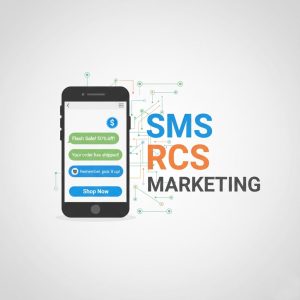Sales Training vs Sales Enablement How to Choose for Your Business

Building a winning sales team requires more than hiring top talent. It demands structured processes and strategies to fine-tune skills and equip your team to perform at their best. Two terms that often pop up in sales strategy conversations are sales training and sales enablement.
But what do these terms mean? Are they interchangeable, or do they serve different purposes? More importantly, which should your business focus on to drive better results?
This post dives into the differences between sales training and sales enablement and helps you decide what’s best for your organization.
Understanding Sales Training
Sales training is exactly what it sounds like. It’s a formal program designed to enhance the skills and techniques of your sales team. It equips sales professionals with knowledge, practical skills, and strategies to engage prospects, close deals, and handle objections.
Examples of Sales Training Topics
- Understanding buyer personas
- Developing effective pitches
- Learning negotiation techniques
- Improving cold calling and prospecting skills
- Mastering objection handling
Benefits of Sales Training
Effective sales training programs can deliver the following benefits to your business:
- Boosted confidence among sales reps
- Improved ability to close deals
- Enhanced communication skills for engaging customers
- Higher proficiency in handling objections
Sales training sessions are typically delivered as workshops, online video tutorials, one-on-one coaching, or through role-plays.
The Challenges of Sales Training
While sales training is undeniably valuable, it often operates as a one-off intervention. Teams receive a burst of energy, knowledge, and enthusiasm, but without consistent follow-up, those gains fade over time. Research suggests that learners forget 70% of new information within a day and up to 90% within a week without reinforcement.
This is where sales enablement comes into play as a complementary solution.
What Is Sales Enablement?
Sales enablement refers to providing your sales team with the tools, resources, content, and technologies needed to sell more effectively. Unlike sales training, enablement is an ongoing process designed to empower reps throughout the entire sales cycle.
Sales Enablement Strategies
- CRM Platforms
Tools like Salesforce or HubSpot centralize customer information and provide insights into buyer behavior.
- Content and Collateral
Marketing materials, case studies, product guides, and ROI calculators help sales reps tailor their approaches to specific prospects.
- Data-Driven Insights
Analyzing sales data helps managers identify bottlenecks in the pipeline and enables reps to focus on high-performing strategies.
- Continual Coaching
Unlike one-and-done training, sales enablement emphasizes regular coaching sessions to refine skills and adjust strategies in real time.
Benefits of Sales Enablement
Sales enablement creates an ecosystem where your team thrives on continuous improvement and adaptability. Major advantages include:
- Providing real-time solutions to real-world obstacles
- Equipping reps with updated content and tools
- Enhancing collaboration between sales and marketing teams
- Supporting personalized interactions with buyers
Sales Enablement Combats Knowledge Decay
Where sales training leaves potential gaps, sales enablement steps in as an ongoing support mechanism. Regular reinforcement ensures that key lessons stick and adapts strategies to align with changing market conditions.
Sales Training vs Sales Enablement Key Differences
At a glance, sales training and enablement can seem similar since both aim to enhance overall sales performance. However, their differences lie in scope and execution.
|
Aspect |
Sales Training |
Sales Enablement |
|---|---|---|
|
Focus |
Skill-building and techniques |
Ongoing support, resources, and tools |
|
Timeline |
Short to medium term workshops |
Continuous and long term |
|
Goal |
Improve specific sales skills |
Empower reps with tools and data |
|
Approach |
Event-driven, periodic |
Integrated into daily workflows |
|
Key Deliverable |
Knowledge and abilities |
Improved processes and infrastructure |
Which One Does Your Business Need?
Every organization is different, so the answer largely depends on your goals and current challenges. Here’s a simple guideline to help you decide.
Choose Sales Training If…
- Your team is inexperienced and requires basic sales techniques.
- There’s a need to address skill-specific areas like objection handling or negotiation.
- You’re onboarding new sales reps who need foundational knowledge.
Sales training is your ideal launchpad for creating a capable sales team.
Choose Sales Enablement If…
- Your team knows the basics but lacks real-time resources for success.
- You want a scalable system that evolves with changing customer and market trends.
- Sales and marketing alignment is critical to improving pipeline efficiency.
When implemented well, sales enablement turns existing talent into a high-performance machine that delivers consistent results.
The Power of Combining Both
The best-performing organizations don’t choose one over the other; they combine both strategies. Use sales training to provide a foundational skill set, and complement it with sales enablement practices to ensure ongoing growth and adaptability.
Final Thoughts How to Transform Sales Within Your Business
Sales training and sales enablement are not mutually exclusive; they’re partners working toward the same goal. By providing your team with both the knowledge they need upfront and the tools to sustain it, you’re setting them up for long-term success.
If you’re ready to take your sales performance to the next level, consider evaluating which gaps to fill. Start with a comprehensive training program and follow through with a robust enablement strategy.
Looking for tools or partners to assist you along the way? Reach out to us today and discover how we can help you create a sales powerhouse.





